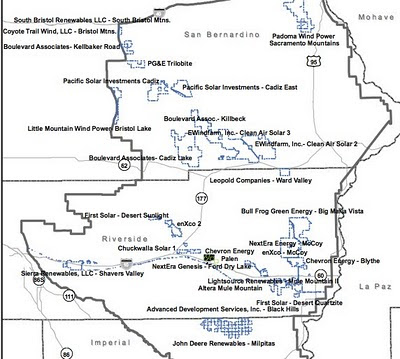First Round of Solar Projects Cast Shadow on Future of Desert Ecosystem
The first batch of solar power projects approved by the Bureau of Land Management have begun construction and are expected to fragment and industrialize America's remaining southwestern deserts, blocking wildlife movement and driving some plant and animal species closer to extinction. Although some projects will be built on land that is already disturbed or on privately owned land, the vast majority are on public land with pristine desert habitat. Although Federal and State requirements will require measures to lessen the impact on plants and wildlife, the long-term impact of these projects is expected to seriously degrade the ecology of the two primary bio-regions in Southern California--the Mojave and Colorado Deserts. Summary of solar power projects: Ivanpah Solar Energy Generating System Company: BrightSource Energy LLC Project area: 3,600 acres (5.6 square miles) Location: Northeaste...





